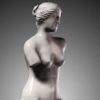Search the Community
Showing results for tags 'roman'.
-
The civilization's design document will be compiled into this wishlist indicating status of progress and priority as well as guiding the way to the topic where the art is being developed (those ==Task threads). - please post below if there are any things you would love to see. - Note: If no more significant/longer existing variant/dynasty comes short before or after a minor civilization faction then we can create art, otherwise we should avoid it. Though there might be special buildings and units which we could create if worth it. Eras / Civilization Variants to model: Roman Republic (SPQR, 753..40BC), Peak: 300BCE, Region: Italy..Mediterranean;West Roman Empire (Imperium Romanum, 40BC..450AD), Peak: 10AD, Region: Mediterranean..Middle East;East Imperial Rome (?200AD..330AD), Peak: -AD, Region: Mediterranean..Middle East;Basileia Toh Rhomaion (Thematic: Byzantine) (330BC..1453AD), Peak: 900AD, Region: Mediterranean..Middle East; 3D 2D Animation Map/Campaign Help! Huge culture/civilization conflict here: Rhomaion are both Greek and Roman ...
-
- roman
- art wishlist
-
(and 1 more)
Tagged with:
-
You can deffinately judge a culture by the everyday things. From an artisitic point of view and interest, we in modern times drink out of cheap cups and eat out of cheap easy to break plates. Have we lost our pride and culture? This is a Medieval goblet Viking/Norse Greek/Helenes Byzantine Roman Each of these goblets celebrates heritage... In particularly... The Romans pawn all of them. Why? Why not of a biased opinion or a nerve to simply promote superiority... But by the realization and awe to greatness, simply by the spectacular principles which ignited the golden age. "The mystery wasn’t solved until 1990, when researchers in England scrutinized broken fragments under a microscope and discovered that the Roman artisans were nanotechnology pioneers: They’d impregnated the glass with particles of silver and gold, ground down until they were as small as 50 nanometers in diameter, less than one-thousandth the size of a grain of table salt. The exact mixture of the precious metals suggests the Romans knew what they were doing—“an amazing feat,” says one of the researchers, archaeologist Ian Freestone of University College London." Quoted from here And this is the goblet ......


